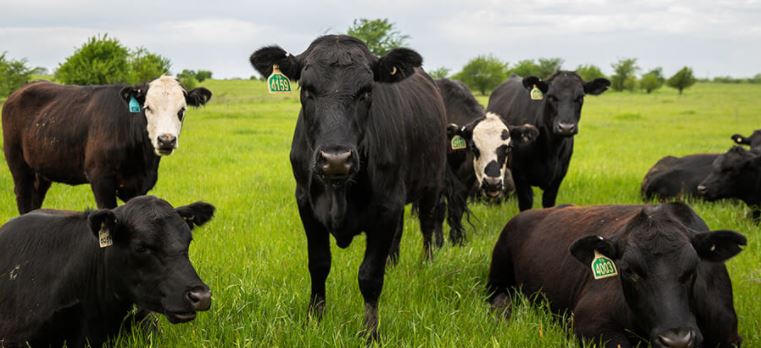
As summer temperatures begin to rise, so does the threat of summer heat stress. Heat stress has a negative impact on animal welfare and a health impact on cattle caused by the relationship between temperature, humidity and air flow. Heat stress can impact performance and reproductive efficiency along with health outcomes in livestock. Heat stress is an animal welfare concern in all operations from cow-calf to the feedlot. Taking preventative measures can mitigate risk of death and loss of production.
The relationship between temperature, humidity, and air flow is important when considering heat stress. Humans generally have a higher threshold for heat than cattle. When temperatures rise above 85 degrees F, cattle may begin to experience stress, and if humidity is high, heat impacts may start at even lower temperatures.
All cattle are at risk of heat related stress, but some may be more susceptible than others. Animal age, hair coat length, hair coat color, and nutritional status interact with environmental factors to influence the severity of heat stress on individual animals. Younger and older cattle, along with those who have pre-existing conditions such as lameness, pregnancy, or other illness like bovine respiratory disease may be significantly less tolerant to heat. Black hided cattle and those approaching harvest weight may also be predisposed to heat stress.
As heat stress begins, clinical signs may not be noticeable or may remain very subtle. Possible signs include decreased appetite, lethargy, restlessness, and weakness. As the condition progresses, rapid breathing, panting, or drooling are often noticed. As cattle seek relief, they may walk more, leading to lameness, or group together, which may amplify hot conditions.
Water resources need increased during times of potential heat stress. For each 10 degrees increase in ambient temperature above 40 degrees Fahrenheit, cattle consume about 1 more gallon of water per day. Individual animal needs will vary. For instance, cows nursing calves need to drink an additional gallon of water for every gallon of milk produced.
Water should be clean, free from contaminants, and readily accessible. All water sources should be checked daily. Taking for granted that an automatic waterer is functioning can lead to devastating results. Troughs should be cleaned on a regular basis.
Monitoring nutrition during temperature extremes is always important. Rations and types of forage intake may need to be adjusted during summer months. Additionally, if cattle are receiving concentrates, the amount and timing of feeding can make a difference in their ability to regulate temperature.
Shade, ventilation, and other cooling mechanisms can also assist cattle in temperature management. Generally, there needs to be enough shade for all cattle to have comfortable access at one time. Approximately 20 to 40 square feet per animal is recommended. Ventilation and airflow are also important, especially if cattle are kept indoors. Fans, misting systems or sprinklers can help to alleviate the heat.
The Cattle Comfort Advisor, which is part of the Oklahoma Mesonet (mesonet.org) system, is a readily accessible tool to monitor both temperature related stress year-round. This tool evaluates the level of heat stress and takes into consideration air temperature, relative humidity, solar radiation, and wind speed.


















